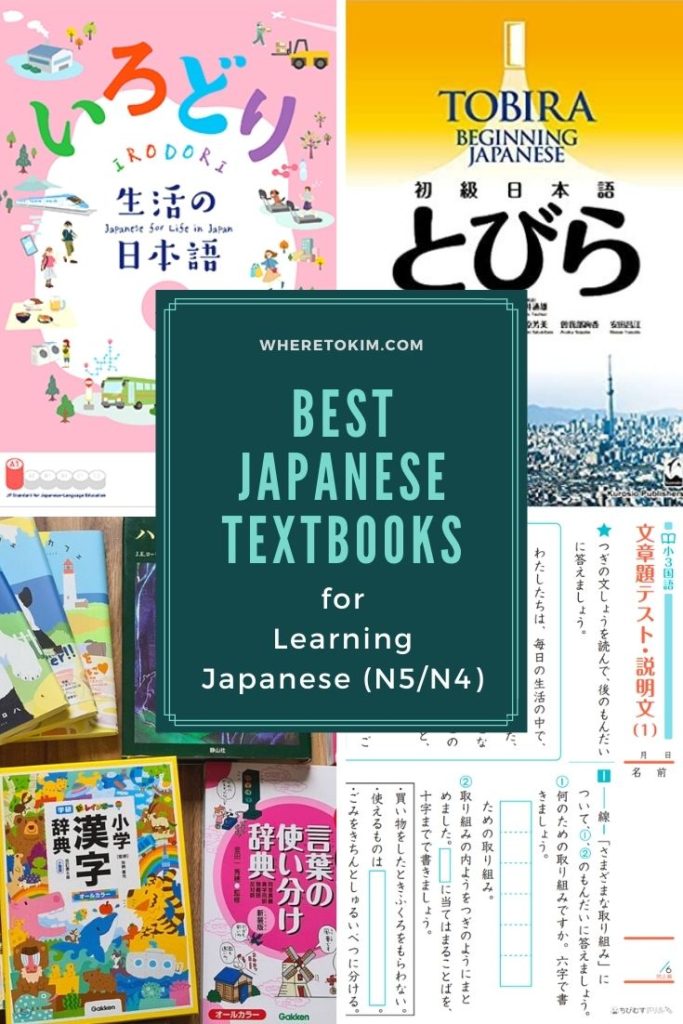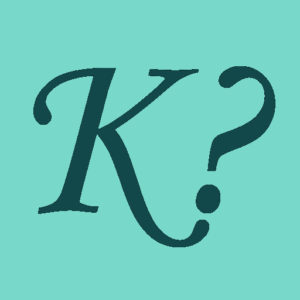What are the best Japanese textbooks and other resources for learning basic conversation, grammar, kanji, and pronunciation at N5 and N4 level? Get a headstart learning Japanese with these language resources.
This overview of Japanese textbooks and other resources is meant for those studying JLPT N5 and N4. For those of you studying JLPT N3: take a look at Tobira: Gateway to Advanced Japanese, which will probably be my next textbook. When – if ever – I reach N3, I’ll compile a list of resources for that.
Table of Contents
- Best Japanese textbook: Tobira 1: Beginning Japanese
- Free Japanese textbook: Irodori – Japanese for Life in Japan (new recommendation)
- Best Japanese grammar handbook: A Dictionary of Basic Japanese Grammar
- Best Kanji resources: Dictionary, apps and book
- Useful Japanese vocabulary resource: Synonyms / antonyms / homonyms / kanji readings book
- Best Japanese vocabulary dictionary: WWWJDIC
- Best free Japanese reading material: Todai and Tadoku
- Free learning materials for Japanese school kids: Happylilac
- Best (free) online course for learning Japanese: Irodori
Best Japanese textbook: Tobira 1: Beginning Japanese
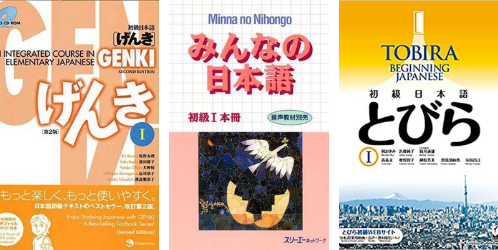
Among those starting out with Japanese, the most popular books are Genki (I and II), Minna no Nihongo and Tobira. I used Genki I, but I think the other methods would work just as well. Tobira (one of the go-to textbooks for N3) has recently published its own N5/N4 book: Tobira 1: Beginning Japanese. Looking at the Tobira’s sample pages, I think I would prefer Tobira over Genki if I were to begin my Japanese learning journey today because I like the layout, explanations and content.
Some thoughts about Genki I
What I like about Genki – an integrated course in elementary Japanese:
- The pace is good and you learn many new things in each chapter.
- It uses hiragana / katakana / Kanji from the start. Although there is romanization of hiragana and katakana in the first chapters, I recommend learning these scripts through another resource before you start with Genki.
What I like less about Genki – an integrated course in elementary Japanese:
- The new grammar you learn is usually not paired with similar grammar points. For someone who enjoys learning grammar, this is not very pleasant.
- You need another resource to keep up with the Kanji. Most Kanji have furigana, but at some point you want to stop looking at the furigana and learn to recognize the Kanji.
- Many of the exercises are intended for classroom use, but you can do most of them on your own.
What other books do I use?
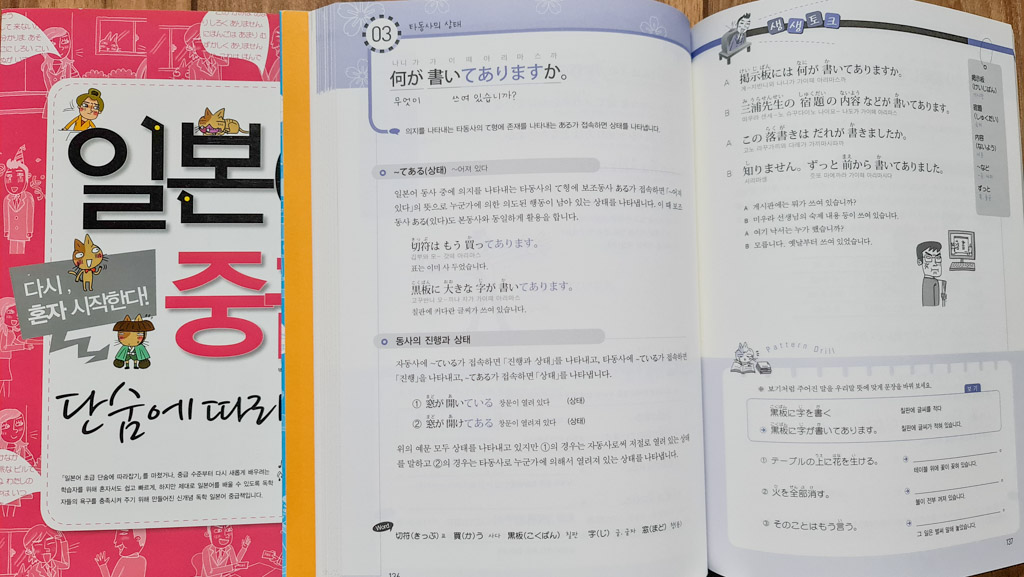
I mix Genki I with Korean textbooks for learning Japanese (일본어 초급 단숨에 따라잡기 and the 중급 version). Since Korean and Japanese are more similar than English and Japanese, I find it much easier to have Japanese compared to the former. A comparison to English requires a lengthy explanation because the sentence structure is so different, but for a comparison to Korean, it is often sufficient to mention the grammar or vocabulary in the other language. The Korean textbooks are more concise with fewer exercises and I go through the basic material much faster. For those of you who know intermediate Korean, I recommend Korean textbooks for learning Japanese.
Also read: Best Textbooks for Learning Korean
Free Japanese textbook: Irodori - Japanese for Life in Japan (new recommendation)
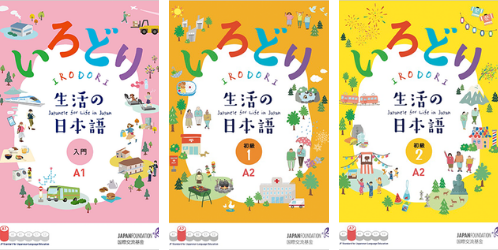
Irodori: Japanese for Life in Japan is a free Japanese textbook series for people who are living in Japan, or who will be living in Japan in the future. It teaches Japanese for different daily situations in Japan, including working, shopping, having fun, eating, and interacting with other people.
This method consists of three textbooks including mp3 up to and including A2 level. You can also download bundled grammar notes, kanji reading exercises, tips for living in Japan, and word lists.
It looks perfect for self-study: you can do the exercises on your own, all the materials are available and the books are pleasant to look at. When I continue my Japanese self-study I will work through some chapters from Irodori.
Best Japanese grammar handbook: A Dictionary of Basic Japanese Grammar
The Dictionaries of Japanese Grammar series consist of A Dictionary of Basic Japanese Grammar, A Dictionary of Intermediate Japanese Grammar and A Dictionary of Advanced Japanese Grammar.
These books give the best general overview of Japanese grammar. Of course, you only need the basic one to get started.
A free resource to get you started is Tae Kim’s Guide to Learning Japanese. This is a very comprehensive guide to basic Japanese grammar. It is easy to read and follow and perfect for getting you started with the basics. There might be some errors in the guide, but none too bad if you use it at this level.
What other book do I use?
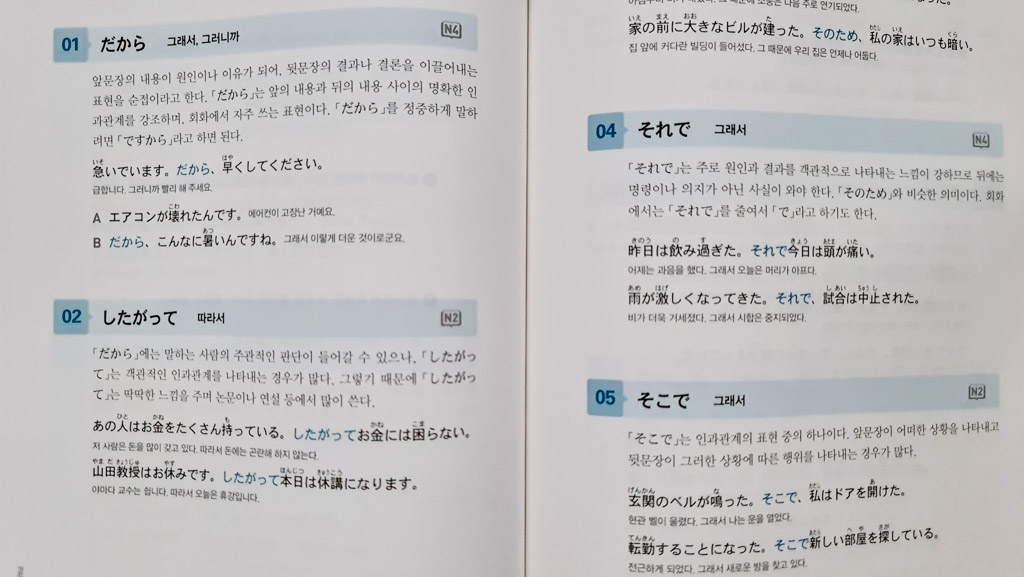
I use a Japanese grammar book in Korean (일본어 문법 학원으로 끝내기) for reference. As with the textbooks, I really like the ordering of the Korean book; it seems more natural to me. There is less explanation in this book, but at this level it is enough.
Best Kanji resources: Dictionary, apps and book
There are many online resources for learning Kanji. Many years ago, I started with Wanikani, a tool that helps you memorize the meaning of Kanji. Although it did what it promised (and is very addictive!), I noticed that I was focusing too much on recognizing Kanji and neglected studying grammar, conversation and vocabulary. So I chose a less addictive Kanji training method to support my Japanese learning journey, namely the Obenkyo app.
In the Obenkyo app (Android), you can look up Kanji by JLPT level and find out all the basic information you need to learn about this Kanji. It also has tests that will help you remember them.
Whenever I come across a Kanji I don’t know, I look it up in the WWWJDIC dictionary app (for Android) on my phone. In this app, you can sketch the Kanji and get the meaning, stroke order, and words in which it is frequently used. I have tried many other apps, but I keep coming back to this dictionary.
Then I got to the point where my Kanji knowledge was lagging behind my grammar and vocabulary and I needed to focus a little more on Kanji. I looked at many learning methods, but was never satisfied with the scope of the books as they often focused on a small amount of Kanji. I wanted a book that would last me a long time and I ended up buying a Kanji dictionary that Japanese children use in elementary school. I quite like this book as it helps with immersion and forces me to read Japanese. Also, it is very comprehensive and gives more information than books meant for foreigners. If you do prefer a book in English, check out Kanji Dictionary for Foreigners Learning Japanese 2500 N5 to N1. As you can see, I prefer very complete resources over guided learning methods.
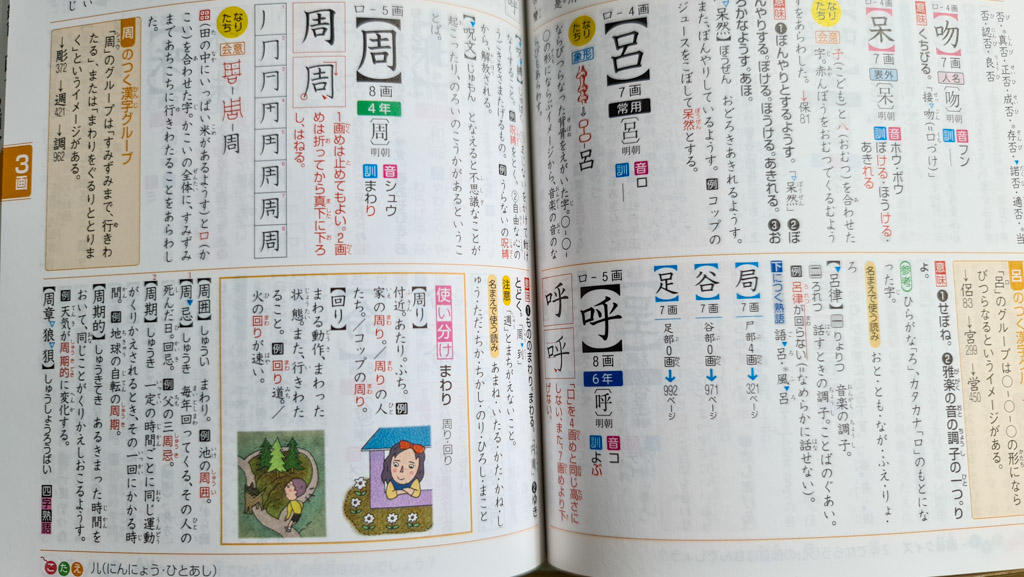
How do I learn Kanji?
If I stumble upon a Kanji I don’t know or keep seeing a particular Kanji I want to know more about, I look it up in a dictionary and study its stroke order and frequent usage. From there I look for similar looking Kanji to learn how to tell them apart and search for homonyms to also study those as well. The book in the next topic will help you tell Kanji readings apart.
These days my learning is guided by chapters from textbooks and reading above my level in the Todai news app, manga or Harry Potter.
As soon as I master N5 and N4 level, I will however buy Tobira’s Power Up Your Kanji for better memorization.
Useful Japanese vocabulary resource: Synonyms / antonyms / homonyms / kanji readings book
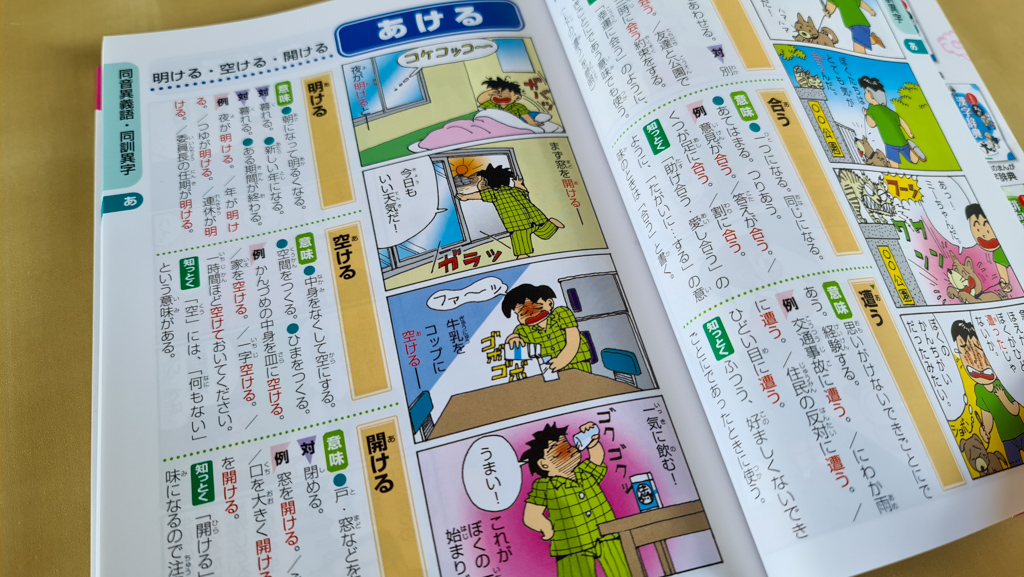
I have not yet reached the point where I make vocabulary my main focus. For now, grammar and Kanji take precedence in my study sessions.
I did buy a book about synonyms, anonyms and homonyms, because I wanted to have a good overview of some words that I have a hard time telling apart. It’s a great book for that purpose, as you can read in my review.
Whenever I want to practice vocabulary the ‘easy way’ I turn to Memrise or Anki.
Best Japanese vocabulary dictionary: WWWJDIC
I must admit that this recommendation is not of much use to those of you without Android phones, but WWWJDIC is the vocabulary dictionary I like best. Although I prefer to use physical books for many other things, I always look up vocabulary on my phone because it is faster and more flexible. In this dictionary app, I can sketch the Kanji, type in Japanese or type in English.
Best free Japanese reading material: Todai and Tadoku
As soon as I know the very basics of a language (studying N5) I start reading in that language. For this purpose, the free Todai Easy Japanese News app (Android or iOS) is perfect because it helps you with all vocabulary and grammar you don’t know. If you pick a news article that is heavy with N5 material, you can get started right away. When your Japanese improves, you can change the settings to receive less help with the things you have learned.
Tadoku.org is a great resource with free short stories that you can download as pdf. I can’t think of a reason not to use it.
If you prefer physical books, check out Japanese Graded Readers. They are quite expensive though and I would not buy level 0 as you can easily find free resources online for this level. Level 1 and 2 can be interesting though and after that you can switch to real Japanese sources.
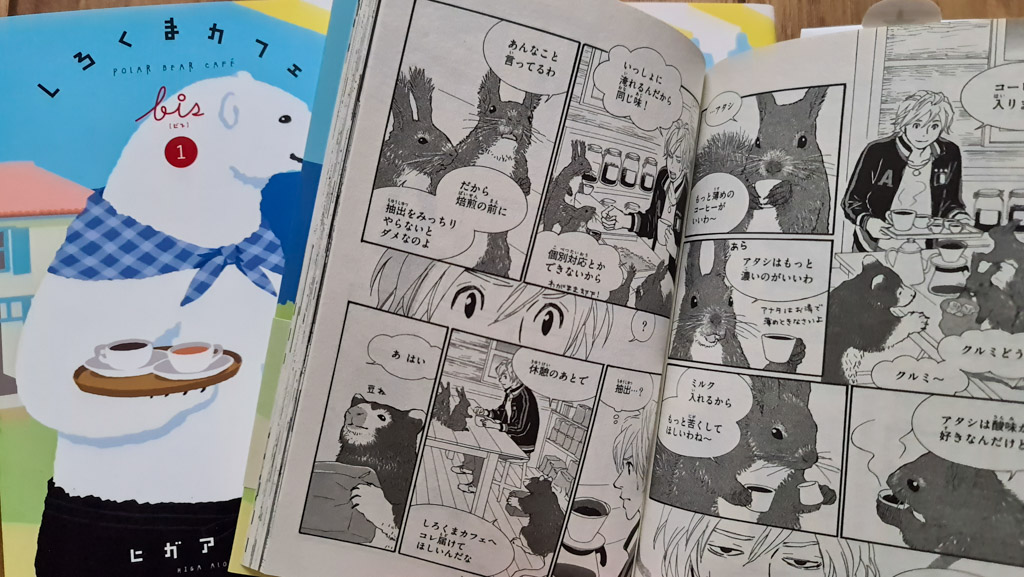
When you are close to mastering N4, you can take a look at some free manga in the Manga Zero app (Android or iOS). Most manga will be way too complicated, but there are some easier ones that you can use to challenge yourself. For manga, you can also take a look at Shirokuma Cafe which you can read at N5 level.
Free learning materials for Japanese school kids: Happylilac
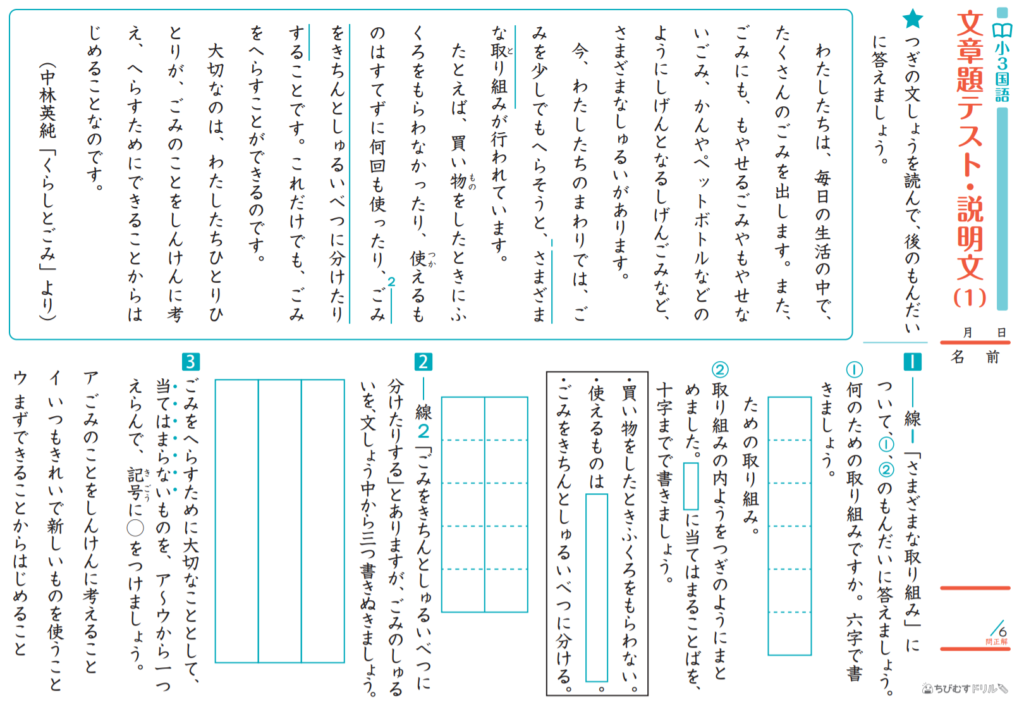
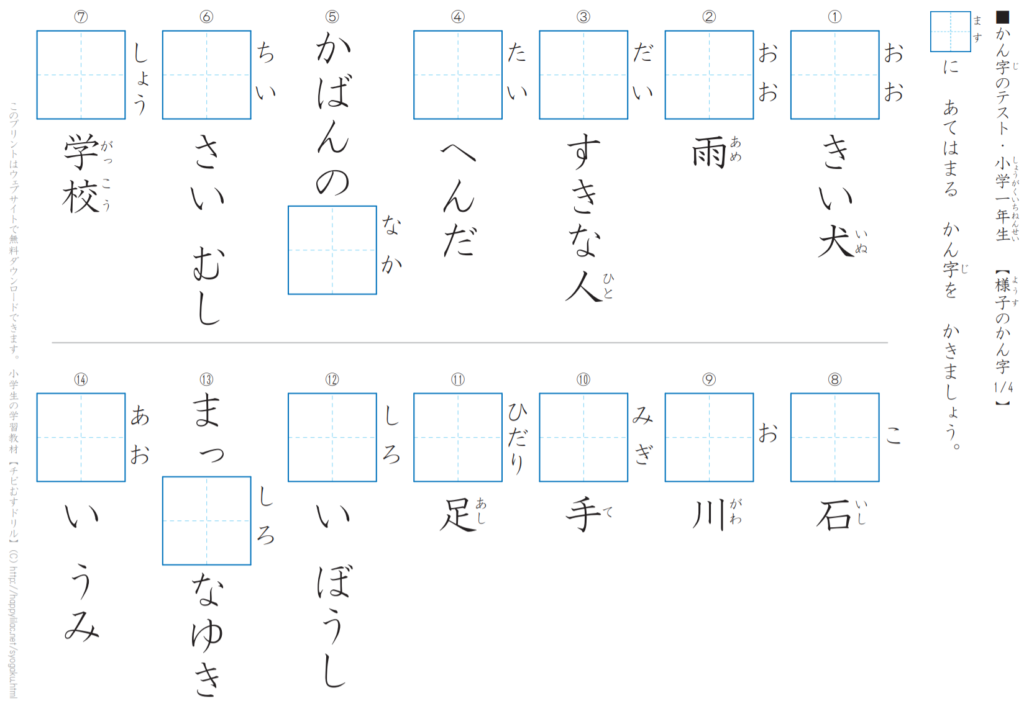
At happylilac.net you can download free language learning materials that are used in Japanese elementary school and middle school. The website and materials are in Japanese, but once you know where to find the resources you like, it is easy to navigate. Another option is to have Chrome translate the website for you.
What’s really fun about this website is that it also contains learning materials for other subjects like math and science. But you’ll probably focus on the Japanese language material. I especially like the worksheets for reading comprehension, grammar and vocabulary. Answers to the worksheets and tests are also provided.
Best (free) online course for learning Japanese: Irodori
Irodori not only offers free textbooks, it also has a free online course.
That’s it: a book or resource for every category to help you learn Japanese at JLPT N5 and N4 level. What is your favorite Japanese textbook or resource?
